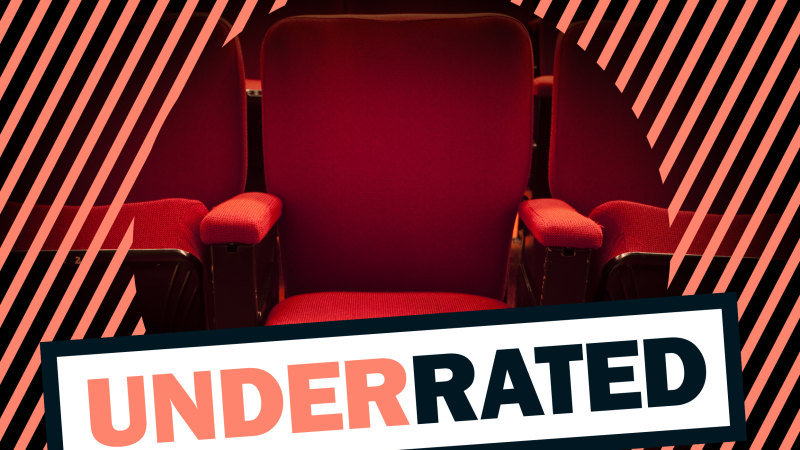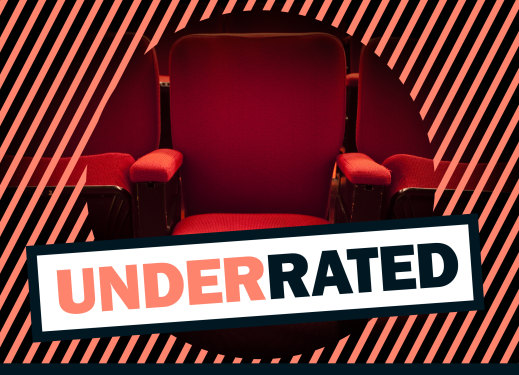In this column, we deliver hot (and cold) takes on pop culture, judging whether a subject is overrated or underrated.
Save articles for later
Add articles to your saved list and come back to them any time.
Watching Tick, Tick… Boom! at the Lyric Theatre last week, I was struck by a pang of disappointment: no intermission. Sure, the show was only 90 minutes through, so a break was wholly unnecessary. But I felt robbed, largely because I’d already planned for a mid-show scoop of dulce de leche gelato.
Same thing at Sydney Theatre Company’s Fantastic Mr Fox. Seeing as it’s a kids’ show and kids have the attention spans of dogs, it barely runs an hour. But judging by the endless stream of mums and children to-and-froing to the toilets, a pause might’ve been useful.
It’s always the right time for a halftime.Credit: Marija Ercegovac
The intermission has become a significant part of the theatre experience for me. I even have a favourite ritual, once the curtain closes after that first or second (sometimes third) act: I head to the bar, get a black coffee, knock it back with the individually-wrapped Biscoff I smuggled in my coat pocket, and I return to my seat wired with anticipation for the home stretch.
I’m never more alert than after intermission. I could sit a high school maths exam after intermission and actually pass. The beginning of a play or an opera can feel like torture, knowing how far there is to go to the conclusion. The intermission is like the pep-talk from a corner trainer in the ninth round of a boxing match: “You’ve nearly made it, get back in there and see what happens to Don Giovanni!”
Beautiful things happen at intermission. People drink, people pee. During Handa Opera’s Madama Butterfly, I watched a crew onstage construct an entire city block in 15 minutes. I watched an elderly couple who’d been seated beside me swipe two prime seats, multiple rows ahead, that had been sitting unoccupied for the production’s entire first half. “Good for you, old people,” I smiled to myself, picturing them as young rascals evading fascist security guards at soccer games in the old country during the Depression.
Some people don’t like intermissions. I’ve seen them. They just sit there for, I assume, the whole 20-minute break, staring at a closed red curtain, blocking the aisle so that you have to shuffle awkwardly by their legs just to enjoy your coffee and Biscoff in the lobby.
I imagine these people would do away with intermissions altogether, eager to get the show done early so they can, I dunno, beat traffic. Imagine defining your life by traffic. Red, stop. Green, go. Orange, go faster. A slave to lights. And not fun lights, like a disco ball. I bet at home their lightbulbs are “cool white”, when the correct answer is, obviously, “warm white”. “Cool white” people, I can’t be with them.
Shakespeare was a “cool white” kind of guy, and by that I mean he also, famously, didn’t like intermissions. Shakespeare wrote 37 plays, never included an intermission. Hamlet, in its original form, ran for more than four hours. Shakespeare was there at the Globe like, “You’ll stand for four hours with no break… and you’ll like it!” And you thought James Cameron was sadistic.
People complain that a 20-minute intermission isn’t a long enough break to do anything, anyway. You queue up for 15 minutes trying to buy a $15 glass of prosecco, and then you have to pour it down your throat in one minute because those anxiety-inducing bells are already ringing to tell you the show is about to recommence and you’re gonna get locked out. I can sympathise with this complaint. The only logical answer is to extend the length of all intermissions.
How about 30 minutes? That at least gives you an extra 10 minutes to properly savour that $15 glass of prosecco (poured from a bottle that goes for $12.99 at Dan Murphys). Apparently, kabuki theatre has intermissions that last up to an hour. Imagine being able to sit down for a three-course meal during the Phantom of the Opera’s intermission? That’s the dream. You finish your tiramisu dessert, you walk back to your seat, and then Masquerade starts playing, your tummy full of tiramisu. Every performance would get a five-star review.
By this point, we surely all agree: movies need intermissions. When even a John Wick sequel runs for three hours, it’s time filmmakers and studios work halftime breaks into their scripts. Let people ponder, stretch, replenish the popcorn they inevitably finished during the opening trailers.
It used to be the case: when Lawrence of Arabia opened in cinemas in 1962, it ran with a 15-minute intermission just over midway through its 210-minute runtime. More recently, Quentin Tarantino tried it during his 187-minute The Hateful Eight, a 12-minute pause that allowed viewers to take a break and Google, “What else is Walton Goggins in?” With movies getting ever increasingly longer, I’m surprised the trend hasn’t caught on.
Like, what’s Christopher Nolan scared of? His next film Oppenheimer is three hours long; a coffee-and-Biscoff break at the 100-minute mark would be ideal, for audience and artist alike. Because is there any stronger display of confidence in one’s work than to tell an audience to leave halfway through it, knowing they’ll want to come back 20 minutes later? That’s art.
To read more from Spectrum, visit our page here.
Most Viewed in Culture
From our partners
Source: Read Full Article



